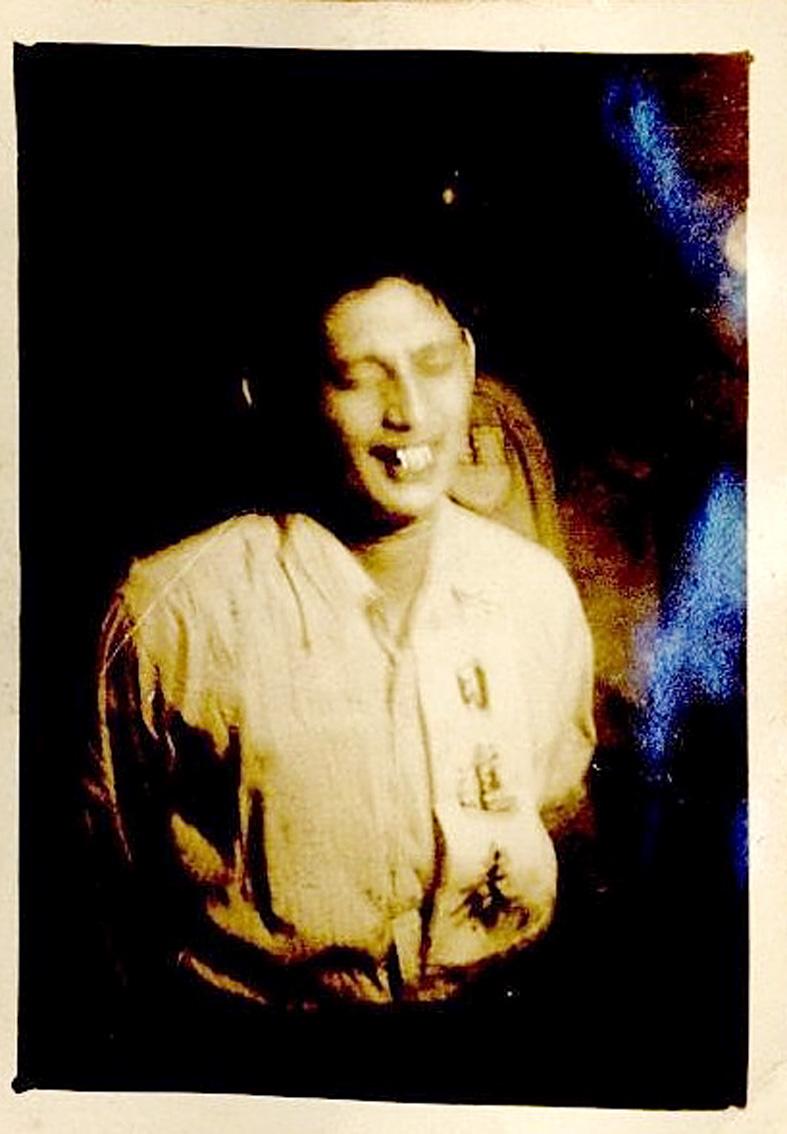Jih Chin-chun (日進春), a member of the Saisiyat community, was the first Taiwanese Aborigine to fall victim to the White Terror era when he was shot by Chinese Nationalist Party (KMT) military police at a riverbank in Taipei 69 years ago, the Transitional Justice Commission said yesterday.
Jih has been memorialized by a picture, in which he is shown laughing, captured just before he was executed on Aug. 29, 1952, the commission said.
The commission said that it has asked researchers to compile a booklet on transitional justice measures focusing on Taiwan’s Aborigines, including Jih, as well as stories of Paiwan youth Lai Hung-man (賴紅炎) and other Aboriginal victims of the period.
The commission said it hopes later generations of Aborigines can learn about the injustices their communities faced during the period.
Jih was shot five times, and his body was left on a pile of corpses in the Liuzhangli (六張犁) area of Taipei, forgotten until the present day, the commission said.
Jih’s father, Jih A-kuai (日阿拐), was the head of a Saisiyat community and went into hiding to avoid capture during a rebellion against the Japanese in 1902, in what is now Miaoli County’s Nanjhuang Township (南庄), it said.
Jih A-kuai died a year later in what now is Luchang Borough (鹿場) of Hsinchu County’s Jhubei City, it said.
Jih Chin-chun was detained after being involved in the case of Chang Yan-mei (張燕梅), it said. Chang was a teacher at Taipei’s Penglai Elementary School and a member of the Taipei Workers’ Committee, a group of Chinese Communist Party sympathizers planted within various government agencies.
Jih Chin-chun once gave Chang an autobiography, but he never participated in any committee meetings, the commission said.
Although he was able to avoid Jih Chin-chun’s fate, Lai had been wrongly accused of dissidence due to his random jottings while he was a student, in which he would raise questions about how to improve the futures of fellow Aborigines, it said.
He was eventually taken for questioning while he was teaching at Taitung’s Jialan Elementary School in 1965 and detained for several days, it said.
The White Terror era refers to the suppression of political dissidents including the 228 Incident, an uprising that began on Feb. 27, 1947, which was brutally suppressed by the then-KMT regime. The government subsequently imposed martial law, which was lifted on July 15, 1987.
Source: Taipei Times - 2021/08/30





















